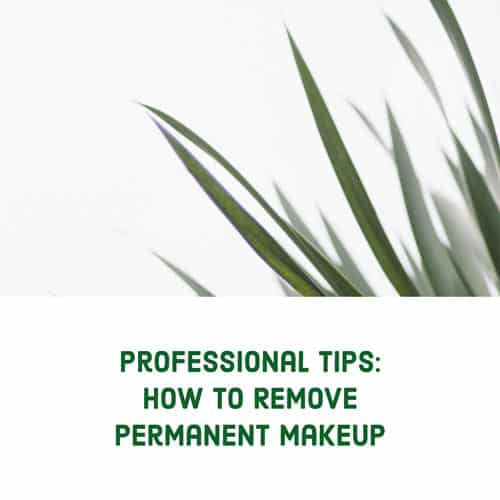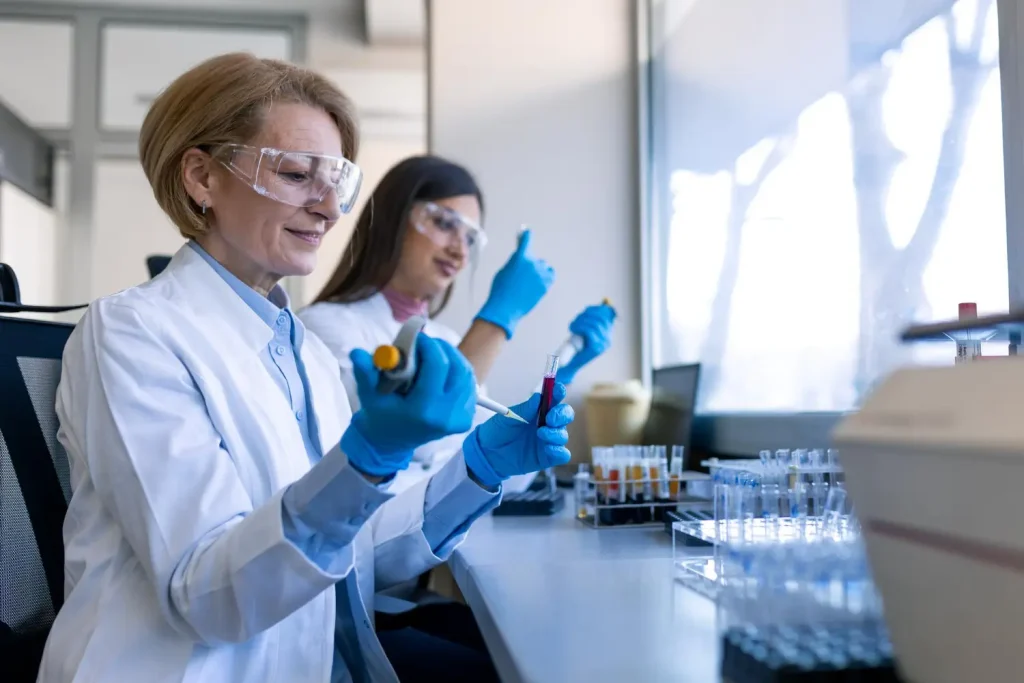Permanent makeup, or cosmetic tattoo, is an extremely popular cosmetic trend. Instead of constantly reapplying the makeup, this technique introduces an array of flesh-like or darker colors, such as black and brown to imitate eyeliners, eyebrows, cheek blushes and lip liners.
However, it is commonly known that not all application methods are perfect. Should the client be at the hands of an inexperienced tattoo artist, the final result may be not as accurate as the chosen design. Often, clients may also realize that they have outgrown the style. In other situations, tattoo marks may also lose the original shape or color due to the eventual sagging and expansion of the skin.
Following the rise of the permanent makeup, the demand for its removal also grows. However, unlike removing normal black ink tattoos, there are some precautions that should be in mind.
Properties of permanent makeup ink
It is important to note that there are differences between the pigment in the ink of normal body tattoo ink and makeup tattoo. The differences arise due to the needs of mimicking the skin color and appear as natural-looking as possible. These differences also impact the technique required to remove them. The 2 major differences are:
- Titanium dioxide For tattoo bearers who have a lighter Fitzpatrick skin type, this ink serves as the “white” base. This pigment derives from the metal titanium that has been oxidized into white powder. However, a chemical reaction may occur when in contact with lasers. It will return the titanium to its original state of dark grey color, especially on eyelids and lips. This creates a coloration to the skin that may be unappealing.
- Molecule size Usually, the micropigmentation sizes vary from 1 to 20 microns. For cosmetic tattoo pigment, the size may be bigger than the usual carbon black used for body tattoo ink. The ingredient titanium is larger and is also being used to cover up large areas. They are often mixed with agents as glycerin.
Removing the pigment
There are various ways that you can use to remove the tattoo from the skin, including topical application, non-laser solutions with a tattoo gun, or laser. Each method is used according to the type of permanent makeup targeted. It is best to have all 3 methods in your clinical practice as each cater to selected circumstances.
Topical
Lotions and creams sold as “tattoo removal creams” are the preferred and safest method for tattoos created under 6 months old. The efficiency of its removal is not as high as when it is combined with the laser treatment.
Organic, home-based exfoliation methods are also applicable for newly made tattoos. Fine sea salt is an ingredient that can be applied twice daily for at least 2 months, as it gently removes layers of skin. This process helps to draw out the ink and, if used with laser, can help to cut down the number of laser treatments.
Non-laser solution
In comparison to topical exfoliation, 1 session of using a bonding agent is equivalent to 2 months of lotion exfoliation. For tattoo artists who do not have access to lasers, this method is their common choice. It is also useful in removing larger pigment molecules.
The removal is usually achieved by opening the skin using the tattoo or permanent makeup machine. Then, apply a bonding agent to the open skin in order to draw the ink to the skin’s surface.
Only a highly trained permanent makeup artist should carry out this procedure. As this is similar to the method of tattooing, it may implement trauma onto the skin.
Laser
The highly preferred treatment is using laser. Similar to regular body tattoos, it removes the tattoo by using a chemical reaction between the laser and the ink. Many sessions are required in order to remove the tattoo, which may take from 2 to 10 treatments, as it aims to maintain the skin’s integrity without leaving any severe damage. Each treatment should remove more ink.
However, it is important to take the different ink composition into consideration. As stated earlier, lasers may react with titanium dioxide and cause a darker scar. Therefore, it is recommended to begin with a non-laser method first and remove any residuals using laser if necessary.
Each type of makeup requires different modulation. It is wise to investigate the optimum level, wavelength, and settings required for each site. Q-switched Nd:YAG is known as the most effective and gentle removal method for makeup tattoos. When dealing with larger sized molecules, use nanosecond lasers to remove the large pigment molecules in comparison to the picosecond lasers commonly used for carbon black ink body tattoo.
Removing eyeliner
An area commonly requested by clients is permanent eyeliner. This is to create a more prominent outline of the eye. That being said, there is also a high demand for eyeliner removal procedures.
Only a handful of practitioners can conduct this procedure due to the challenging and sensitive periorbital area. It is found that laser treatment is the best form of treatment, especially since bonding agents and exfoliations can be too harsh for the surface of the skin in this area.
To protect the cornea, use corneal protective shields under the eyelid. The laser must be set on the lowest possible setting, with the least amount of power output, but also using the largest spot size possible. For multiple treatments, leave an interval of at least 8 weeks to allow the epidermis to complete its full shedding cycle. The lymphatic system will also play its role in disposing the broken molecules. This can lead to fewer treatments, which is cost effective for the clients.
As it is a complicated process, some scarring may occur on the skin. Therefore, to limit the severity of the scar, it is important to schedule as low number of laser sessions as possible. In such an event, products like Ellanse can reduce the appearance.
In certain cases, allergic reactions such as redness, hives, and breathing difficulties may be induced. The allergy may not engage immediately once in contact with the skin, but there is a possibility it is triggered once in contact with the body’s lymphatic system.
When permanent makeup removal is done correctly, there should be low risk of complications. As it has been gaining interest, it is important for researchers to venture more into this industry and pursue for further development.





















